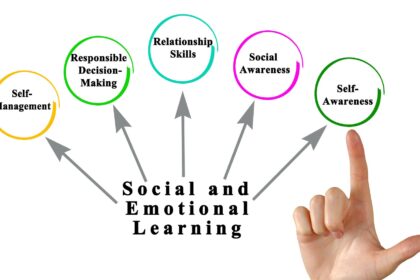Treating Psychopathology In Individuals
Introduction
The purpose of this paper is to review and analyze the causes and treatments of psychopathology by using personal experiences and collected knowledge. This paper will examine the importance of a proper understanding of psychopathology and how effective treatment plans are developed. Thoroughly investigating the causes of psychopathology will offer a therapy or psychology professional insight as to how to better treat a particular ailment, complaint, or disorder. It is imperative to understand the six main etiological perspectives of psychopathology (physiological, cognitive-behavioral, psychodynamic, humanistic, family systems, and sociocultural) to offer proper therapeutic or psychological services.
Evaluation
Physiological Perspective
The physiological approach is also known as the biological approach. This perspective created a wave in terms of developing psychology as a science of its own. The idea highlights the role biological influences have in the formation of psychopathology. One of the most common facets of the biological approach is genetics, or how genetics are able to influence behavior and cognition. Some researchers specifically focus on the way genetics affect brain development. There is also a plethora of research and data on how brain damage affects personality and behavior (Goldstein, 1952).
Although the brain is one of the most commonly researched subjects in biological psychology, some research focuses on other parts of the body as well. The central nervous system, the immune system, and even the endocrine system are quite common zones of exploration in biological psychology. In recent years, there has been even greater interest in how the brain and nervous system work to produce behavior. With the emergence of newer technology, like the magnetic resonance imaging (MRI) scan, and the positron emission tomography (PET) scan, researchers now have the ability to watch the brain throughout its diverse states of condition. This expands the psychological research which could be conducted on brain function, brain damage, drugs, disorders, and many diseases. On the downside, this perspective is limited in that it overlooks cognition-based and experience-based constituents to psychopathology.
Cognitive-Behavioral Perspective

The cognitive behavioral approach is formulated with the premises that learning is one of the greatest formative constituents in the development of many disorders and psychopathological ailments. This perspective is among one of the widest studies approaches, with “Cognitive Behavioral Therapy” (or CBT) being one of the most heavily used treatment methods. A basic breakdown of CBT entails focusing on mental processes (such as thinking, memory recall, problem solving, decision making, or language skills) and modifying how certain key elements function along the way. For example, a psychologist might focus on how a thought is stored, or how that thought is gathered from memory and modified for replay. In short, by evaluating the way information is stored and passed through a patient’s mind, the psychologist has an opportunity to intercept negative behavior and triggers. These patterns can then be modified before the brain processes them into negative actions.
The cognitive-behavioral approach offers a rather diverse treatment method, as it is typically crafted around each patient. Being able to mold a treatment model to a patient’s habits, thought patterns, and core beliefs is immeasurably valuable. And while it has been modified to create a variety of specific treatment models, research shows CBT and its derivatives as one of the most successful treatment strategies of modern time (David et al., 2018). One weakness might include the idea that most biological and experience-based contributes may be overlooked, or insufficiently researched.
Psychodynamic Perspective
The psychodynamic perspective places heavy focus on the unconscious sides of psychology. Some of these unconscious facets include background desires and fears, usually cognitive items which the patient may be unaware exist. This perspective also insists upon the critical involvement of childhood experience (or primacy experiences) in the shaping of the adult personality (Luyten et al., 2015). In modern times, psychodynamic therapy also includes the idea of object relations theory and neuropsychoanalysis. The concept of objects relations theory states there is a developmental psyche with others during childhood and how the inner image of oneself will manifest between different interpersonal relationships.

Although it may sound complex, the core foundation of psychodynamics can be broken down into three sections: the primacy of the unconscious mind, the critical importance of primacy experiences, and psychic causality. Primacy of the unconscious mind means attributing most psychological processes to unconscious thought. A lot of research exists which confirms this unconscious creation concept to be true (Brown and Starkley, 2000). The critical importance of early experiences cannot be ignored either, as childhood experiences can greatly impact the development of personality and social identity. Social learning is undoubtedly important in the creation of a child’s idea of self and moral character (Luyten et al., 2015). And finally, psychic causality stands for the concept that no thought, feeling, motive, or behavior is by chance. Instead, this concept supports the creation of these actions to originate from a combination of identifiable physiological or psychological processes. One weakness might be the extremely large number of actions which much be evaluated and analyzed in a treatment plan, however thorough, could slow down the entire progress of treatment.
Humanistic Perspective
The humanistic psychological approach focuses on the entirety of an individual. This perspective highlights the importance of some key elements including free will, self-actualization, and self-efficacy. The concept does not focus on an ailment or dysfunction, but instead, on the patient’s ability to maximize their potential and pursue a fully healthy well-being. The origin of this perspective denotes that previous treatment models were largely negative in concentration, addressing only negative and tragic emotions or experiences (Schneider et al., 2015). The humanistic approach adds another dynamic to psychological treatment. It showcases the ability of positive practices and holistic healing in the formation of newer, more favorable belief systems in the patient. One negative attribute of humanistic therapy is the idea that negative emotions and experiences do exist and are a “mentally tangible” constituent of what creates an individual. Totally ignoring the idea of negative emotions may inadvertently extend treatment, compared to providing the patient skills for handling the negative emotions (which are sure to be present in some ailments).
Family Systems Perspective
The family systems perspective attributes most of an individual’s cognitive and behavioral functioning to the intrapsychic factors of the individual’s place in a family or community system. This theory is not only focused on analyzing one’s place in their family, but also in any other group or social setting. In a sense, the person’s behaviors and cognition will form based upon how the system manipulates the individual. The system is often capable of rendering self-correcting and self-reinforcing feedback loops and behaviors in an individual (Fine and Holt, 1983). This type of psychological manipulation can produce many psychopathological ailments and disorders. The family systems perspective analyzes the many variables within the system including but not limited to boundaries, coalitions, collusions and betrayals, loyalty issues, belief systems, social identity, anxieties, emotional demands, and role expectations. This creates an advantage in mapping an effective treatment plan.

The family systems approach allows the psychologist to breakdown a patient’s life based upon their compartmentalized systems (family, friends, groups or clubs, community involvements, etc.). The therapist can then identify the ailments which are resulting from the various involvements, and the framework can be modified, resulting in different behavioral outcomes. In a simpler sense: the environments of which a patient belongs can be analyzed, allowing the psychologist or professional the ability to track the emotional dynamics of an illness or ailment and better collaborate with the environment to resolve any issues. One downside to this approach is accepting the concept that a patient is less in control over their psychological and behavioral state, and that accountability falls within other, external elements.
Sociocultural Perspective
Sociocultural theory in psychology highlights the importance of societal contributions in an individual’s cognitive and behavioral development. This approach suggests that human learning is almost entirely a social process, focusing on the interactions between people and the cultures they are immersed within. This perspective typically attributes the formation of higher-order functions to parents, caregivers, teachers, peers, role models, and early cultural experiences (Matthes and Stoeger, 2018). The learning individual essentially mimics these behaviors and belief systems. The perspective does not only focus on how the individual is affected by their cultural experiences, but also on the learning process in general. In a sense, each culture will produce its own tools of intellectual adaptation, exposing the children to the skills they need to survive in that particular culture. One con to this perspective is the clear fact that there are many cultures, and the survival tactics learned through the strategy are limited to one’s own culture and only that culture.
Analysis
The perspective which seems most appropriate for a personal psychological or therapy endeavor is the cognitive-behavioral approach. The implementation of cognitive behavioral therapy is extremely capable and diverse across such a wide spectrum of disorders and ailments. It is able to produce treatment plans which can resolve very minor psychological issues, as well as more complex patterns and disorders. Personal experiences with implementing CBT have revealed an incredibly flexible treatment plan that matches a broad spectrum of ailments, some of which are rooted in deficient childhood developments and others which developed after adolescence. CBT is even capable of producing treatment plans for couples, whether the couple is attending therapy together or individually. It is also possible to implement CBT with a patient of any age.
Synthesize
Cognitive behavioral perspective is very flexible in terms of implementation. Empathy is a large part of offering effective service in almost any industry, including those of psychological services. Empathy allows a psychological professional to implement the same type of treatment plan as they themselves would want to receive. The professional should have a full understanding of the logical flow of cognitive and behavioral developments in a patient. Empathy will help the professional form the most effective treatment model, offering a greater level of care. Cognitive behavioral therapy encourages the tracking of triggers, tracing them to core beliefs, and modifying trigger responses and core beliefs through acts of cognitive interception. Providing a patient with this type of cognitive restructuring can give them a tool for redeveloping their response to a trigger..
Conclusion

Ultimately, the best therapeutic and psychological service will be offered by a professional who has a thorough understanding of the causes and treatments of psychopathology. This means understanding the six main etiological perspectives. Regardless of the concept that each perspective has its own benefits, the most effective perspective for a personal therapeutic or psychological endeavor would be the cognitive-behavioral approach. This is largely because it is one which so versatile, with the ability to be implemented in some form for nearly any patient. Implementing this perspective will provide patients the most substantial opportunity to find more than solutions to ailments and disorders, but greater personal growth. This is because the therapy can be modified beyond the originally targeted ailments to produce an infinitely better life for the patient in general. Obviously, it may make sense to utilize a different perspective (to some extent) for different types of patients as well. For example, it makes more sense to consider family systems when working with a couple. Nevertheless, it is imperative to understand all perspectives to be able to offer the fullest and most empathetic services to a patient.
References
Brown, A., and Starkey, K., (2000). Organizational Identity and Learning: A Psychodynamic Perspective. AMR. Vol. 25. Pp. 102–120. DOI: https://doi.org/10.5465/amr.2000.2791605
David, D., Cristea, I., & Hofmann, S. G. (2018). Why Cognitive Behavioral Therapy Is the Current Gold Standard of Psychotherapy. Frontiers in psychiatry. Vol. 9(4). DOI: https://doi.org/10.3389/fpsyt.2018.00004
Fine, M., and Holt, P., (1983). Intervening with school problems: A family systems perspective. Psychol. Schs.. Vol. 20. Pp. 59-66. DOI: https://doi.org/10.1002/1520-6807(198301)20:1<59::AID-PITS2310200114>3.0.CO;2-0
Goldstein, K., (1952). The Effect of Brain Damage on the Personality. Psychiatry. Vol. 15(3). Pp. 245-260. DOI: 10.1080/00332747.1952.11022878
Luyten, P., Mayes, L., Fonagy, P., Blatt, S., and Target, M., (2015). Handbook of Psychodynamic Approaches to Psychopathology. The Guilford Press. New York, NY. ISBN: 2015001484.
Matthes, B., and Stoeger, H., (2018). Influence of parents’ implicit theories about ability on parents’ learning-related behaviors, children’s implicit theories, and children’s academic achievement. Contemporary Educational Psychology. Vol. 54. Pp. 271-280. DOI: https://doi.org/10.1016/j.cedpsych.2018.07.001
Schneider, K., Pierson, J., and Bugental, J., (2015). The Handbook of Humanistic Psychology. Second edition. Sage Publishing. Thousand Oaks, CA. ISBN 978-1-4522-6774-6.




